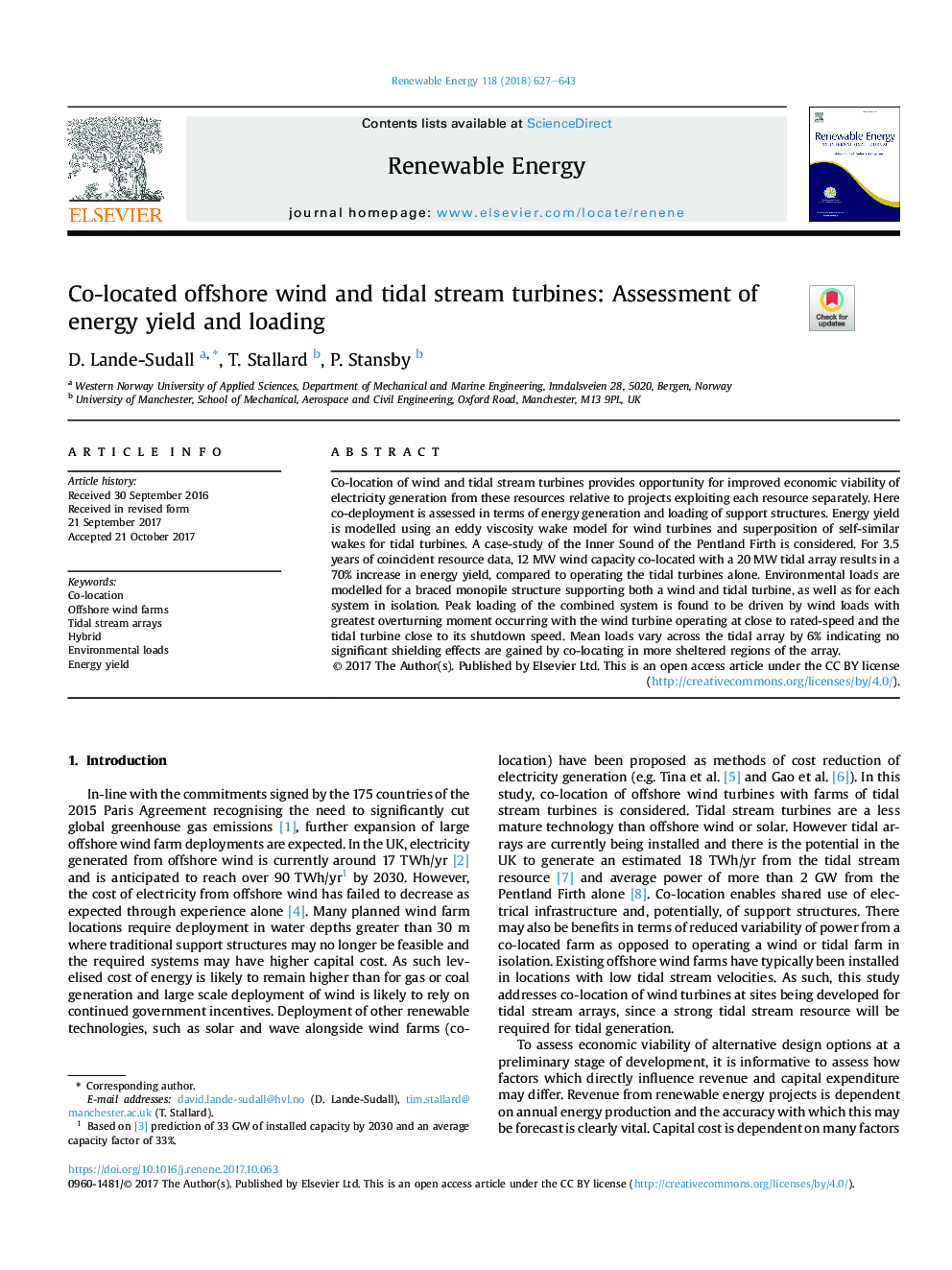| Article ID | Journal | Published Year | Pages | File Type |
|---|---|---|---|---|
| 6765094 | Renewable Energy | 2018 | 17 Pages |
Abstract
Co-location of wind and tidal stream turbines provides opportunity for improved economic viability of electricity generation from these resources relative to projects exploiting each resource separately. Here co-deployment is assessed in terms of energy generation and loading of support structures. Energy yield is modelled using an eddy viscosity wake model for wind turbines and superposition of self-similar wakes for tidal turbines. A case-study of the Inner Sound of the Pentland Firth is considered. For 3.5 years of coincident resource data, 12Â MW wind capacity co-located with a 20Â MW tidal array results in a 70% increase in energy yield, compared to operating the tidal turbines alone. Environmental loads are modelled for a braced monopile structure supporting both a wind and tidal turbine, as well as for each system in isolation. Peak loading of the combined system is found to be driven by wind loads with greatest overturning moment occurring with the wind turbine operating at close to rated-speed and the tidal turbine close to its shutdown speed. Mean loads vary across the tidal array by 6% indicating no significant shielding effects are gained by co-locating in more sheltered regions of the array.
Related Topics
Physical Sciences and Engineering
Energy
Renewable Energy, Sustainability and the Environment
Authors
D. Lande-Sudall, T. Stallard, P. Stansby,
